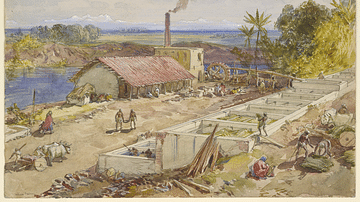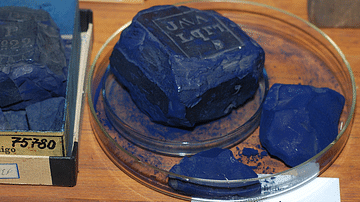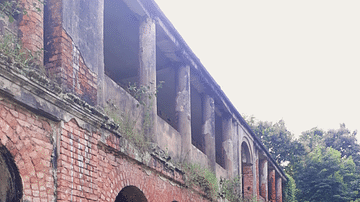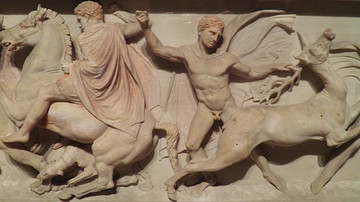Search
Remove Ads
Advertisement
Summary
Loading AI-generated summary based on World History Encyclopedia articles ...
Answers are generated by Perplexity AI drawing on articles from World History Encyclopedia. Please remember that artificial intelligence can make mistakes. For more detailed information, please read the source articles
Search Results

Definition
Indigo Revolt
The Indigo Revolt (aka Indigo Riots or Blue Mutiny) of 1859-60 in Bengal, India, involved indigo growers going on strike in protest at working conditions and pay. The subsequent violence was aimed at exploitative European plantation owners...

Definition
Cochineal
Cochineal is a brilliant red dye extracted from the crushed bodies of parasitic insects which prey on cacti in the warmer parts of the Americas. The dye was an important part of trade in ancient Mesoamerica and South America and throughout...

Image
Cake of Indigo Dye
A cake of dried indigo dye. (Collection of the Technical University of Dresden, Germany)

Image
Bengal Indigo Factory
An illustration of a 19th-century indigo factory in Bengal, India. (From William Simpson's 'India: Ancient and Modern').

Definition
Tyrian Purple
Tyrian purple (aka Royal purple or Imperial purple) is a dye extracted from the murex shellfish which was first produced by the Phoenician city of Tyre in the Bronze Age. Its difficulty of manufacture, striking purple to red colour range...

Image
Ruins of an Indigo Factory
Ruins of an indigo factory at Mongalganj, near Bangaon in West Bengal, India. Indigo was an important cash crop for the East India Company and during the British Raj.

Video
Dr Julia Dye on "Becoming Alexander"
After receiving her Ph.D. in Hoplology, which combines anthropology, sociology, economics, and more to the study of history, Julia Dye wanted to see her knowledge used in a way that would have a lasting effect on the public. Using her background...

Video
Tyrian Purple Dye: Ancients Used Marine Snails to Make It
CreatureCast: Tyrian purple was one of the only bright dyes available to ancient civilizations. This sought-after dye was created from the extracts of marine snails. Read the story here: http://nyti.ms/15nKB02 Subscribe to the Times...

Definition
Sidon
Sidon is the Greek name (meaning 'fishery') for the ancient Phoenician port city of Sidonia (also known as Saida) in what is, today, Lebannon (located about 25 miles south of Beirut). Along with the city of Tyre, Sidon was the most powerful...

Article
Trade Goods of the East India Company
The English East India Company (EIC) was founded in 1600, and it came to control both trade and territories in India, as well as a trade monopoly with China. Goods the EIC traded included spices, cotton cloth, tea, and opium, all in such...